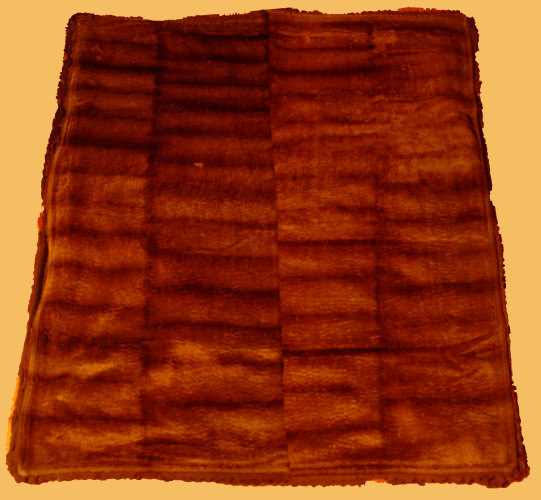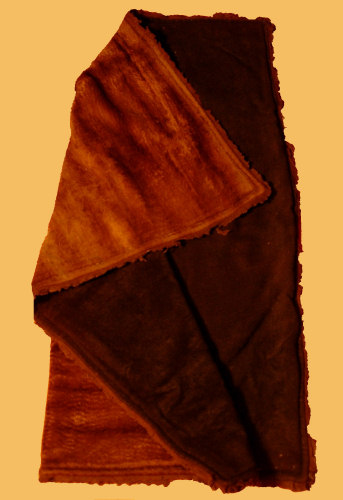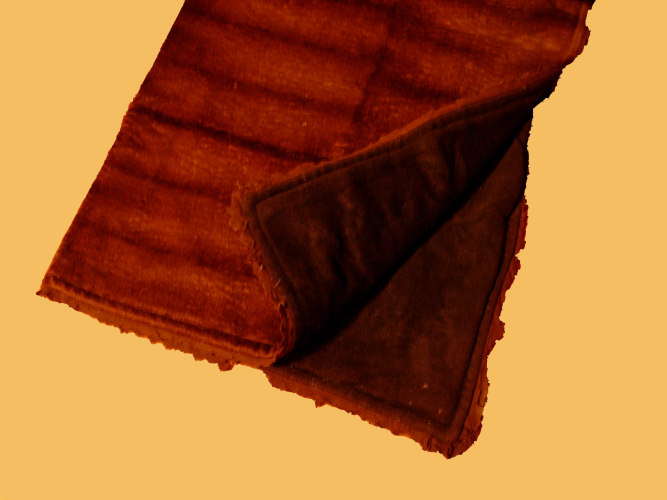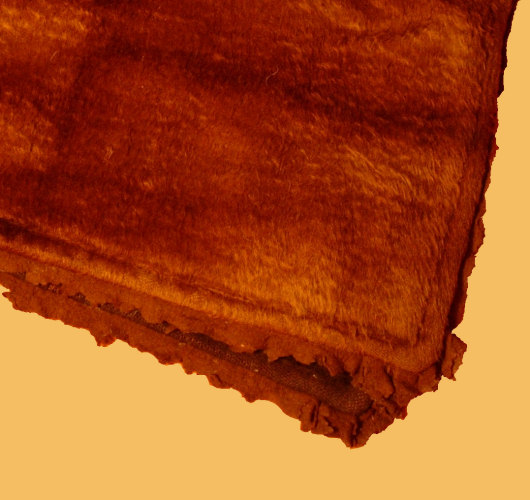


| Exhibited here is a horse-hair blanket. It measures a mere four feet, five inches in width and five feet in length. The blanket's two faces are composed of different materials: the top, or front, is composed of horsehair woven with wool, and the bottom, or back, is composed just of wool. Between the two faces, like the cotton batting in a bed quilt, is a batting made of sawdust or straw. Horsehair is seldom used today, but at one time it was a material used in a number of ways. The most common use for horse hair was in house plaster. The plaster used in houses during the 1800s and early 1900s was composed primarily of lime and sand, such as marble dust, with some sort of strengthening agent. A very common strengthening agent was horse hair. Horsehair was also used in furniture upholstery; the hair, being springy, allowed upholstery to maintain comfortable shape for a long time. When winter time came around, another use for horse hair became evident ~ to make sleigh blankets considerably warmer and water resistant. A horsehair blanket, despite its small size, tends to be quite heavy. The weight of the blanket was intentional. After being seated on a sleigh, or in an open front carriage, the riders would lay the horsehair blanket over their laps. The weight of the blanket kept it from blowing off the riders' laps as the sleigh was in movement. Before placing the blanket over their laps, a foot-warmer, holding glowing coals, might be placed at the riders' feet. Some horsehair blankets are brightly colored (the colors being dyed in the wool prior to weaving), whereas others, such as the one shown here, are left in their natural colors. Designs, such as the alternating light and dark blocks in this example, would have been devised and produced in the process of weaving it. |



